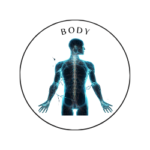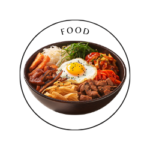 Mind
Mind
- Digital and Modern Well-being
- Mental Health and Emotional Well-being
- Mind-Body Connection and Holistic Health
- Parenting and Family
- Personal Growth and Development
- Relationships and Social Well-being
- Stress and Relaxation
- Therapeutic and Creative Practices
- Trauma and Recovery
- Work, Productivity, and Discipline
 Body
Body
 Fitness
Fitness
 Food
Food
 Beauty
Beauty
Exercises to Boost Balance and Coordination

Why Balance and Coordination Matter
Imagine trying to stand on one foot while reaching for something, only to feel yourself tipping over. Or, moving quickly in a sport, but struggling to stay controlled. Balance and coordination are essential for strength, stability, and injury prevention—not just in athletics, but in everyday life.
Strong balance and coordination help you:
✔️ Improve athletic performance (better movement efficiency).
✔️ Prevent injuries (reduce falls and joint instability).
✔️ Enhance functional strength (better control over body movement).
✔️ Develop neuromuscular efficiency (better brain-to-muscle connection).
Let’s explore the best exercises for improving balance and coordination, plus the top tools and apps to track your progress.
How Balance & Coordination Training Works
✅ Enhances Proprioception (Body Awareness in Space)
- Your body has proprioceptors—sensors that detect position, movement, and muscle tension.
- Training them improves reflexes and movement control.
💡 Example: Athletes use single-leg exercises and agility drills to improve body awareness and reaction time.
✅ Strengthens Stabilizer Muscles
- Core and joint stabilizers keep your body aligned during movement.
- Weak stabilizers can lead to injuries, imbalances, and poor posture.
💡 Example: Single-leg Romanian deadlifts challenge ankles, knees, hips, and core stabilizers.
✅ Improves Neuromuscular Efficiency
- Strength training alone builds muscle, but balance training sharpens the brain-muscle connection.
- Helps athletes react faster and with better control.
💡 Example: Reaction drills train muscles to fire efficiently in fast-paced movements.
Best Exercises to Improve Balance & Coordination
🔹 Lower Body Balance & Stability
✅ Single-Leg Romanian Deadlift – Strengthens hamstrings, glutes, and ankle stability.
✅ Bulgarian Split Squats – Improves single-leg strength and coordination.
✅ Step-Ups with Knee Drive – Enhances balance, control, and lower body power.
✅ Bosu Ball Squats – Challenges proprioception and core control.
💡 Tip: Use a mirror or video feedback to correct posture and form.
🔹 Core & Midline Stability
✅ Pallof Press – Builds anti-rotation strength for better core stability.
✅ Side Planks with Leg Raise – Engages obliques, glutes, and stabilizers.
✅ Dead Bugs – Improves coordination and core engagement.
✅ Hanging Knee Raises – Strengthens deep core muscles for stability in movement.
💡 Tip: A strong core = better balance and movement efficiency.
🔹 Upper Body Coordination & Control
✅ Single-Arm Overhead Press (Unilateral Training) – Develops shoulder stability and motor control.
✅ Turkish Get-Ups – Strengthens core, shoulders, and full-body coordination.
✅ Battle Ropes with Alternating Waves – Improves hand-eye coordination and endurance.
✅ Medicine Ball Tosses & Rotational Throws – Builds power, balance, and reaction time.
💡 Tip: Train one side at a time (unilateral exercises) to improve coordination between both sides of the body.
🔹 Plyometrics & Reaction Drills
✅ Lateral Hops (Single & Double Leg) – Enhances agility and quick reflexes.
✅ Box Jumps with Controlled Landing – Trains explosiveness with balance.
✅ Agility Ladder Drills – Improves foot speed and coordination.
✅ Sled Pushes & Resisted Sprints – Develops full-body balance under force.
💡 Tip: Focus on soft, controlled landings to build joint resilience and injury resistance.
Best Tools & Equipment for Balance Training
🔹 Bosu Ball & Stability Discs
⭐ Best for: Strengthening ankle and knee stability, challenging balance dynamically.
✅ Exercises:
- Bosu Ball Squats & Lunges
- Single-Leg Balancing Drills
- Overhead Press on Stability Disc
📲 Available on: Amazon, Rogue Fitness, and sports retailers.
🔹 Resistance Bands & Suspension Trainers (TRX)
⭐ Best for: Core activation and stability training through unilateral movements.
✅ Exercises:
- TRX Single-Leg Squats
- Band Pallof Presses
- Suspended Core Workouts (Planks, Knee Tucks, Push-Ups)
📲 Available on: Amazon, Rogue, TRX official website.
🔹 Reaction Lights & Agility Training Tools
⭐ Best for: Hand-eye coordination, reflex training, and sport-specific agility.
✅ Popular Devices:
- BlazePod (Reaction Light Training) – Improves reaction speed and coordination.
- Agility Ladders & Cones – Enhances foot speed and movement efficiency.
- Reaction Balls – Trains reflexes and unpredictable movement control.
📲 Available on: Amazon, BlazePod website, sports stores.
Best Apps for Tracking Balance & Coordination Progress
🔹 1. NEXUS Balance App (Best for Balance Testing)
⭐ Best for: Measuring stability & postural control over time.
✅ Features:
- Tracks single-leg balance improvements.
- Uses phone gyroscope to measure movement stability.
- Provides progress reports.
📲 Available on: iOS & Android (Free + Premium).
🔹 2. BlazePod (Best for Reaction & Agility Training)
⭐ Best for: Athletes, martial artists, and anyone needing fast reflexes.
✅ Features:
- Uses interactive light pods to train reaction speed.
- Tracks hand-eye coordination & agility improvements.
- Customizable drills for specific sports & training needs.
📲 Available on: iOS & Android (Device Required).
🔹 3. Fitify (Best for Bodyweight Balance Workouts)
⭐ Best for: Beginners and advanced users looking for guided balance routines.
✅ Features:
- Customizable balance & stability workouts.
- Includes core, single-leg, and coordination drills.
- Tracks progress over time.
📲 Available on: iOS & Android (Free + Paid Plans).
How to Track Balance & Coordination Progress
📊 Weekly Progress Check-In
✔️ Can you hold a single-leg stance for longer than before?
✔️ Is your core more engaged in balance exercises?
✔️ Are your landings more controlled in plyometric drills?
✔️ Do you feel more stable in everyday activities?
💡 Tip: Record videos of yourself performing balance exercises every few weeks to see improvements.
Common Mistakes & How to Fix Them
🚫 Skipping Balance Work in Strength Training → Leads to weak stabilizers and movement inefficiency.
✅ Fix: Include balance exercises 2-3 times per week.
🚫 Only Training on Machines → Reduces stabilizer muscle activation.
✅ Fix: Add free weight & unilateral exercises to challenge balance.
🚫 Not Progressing Over Time → Limits neuromuscular adaptations.
✅ Fix: Increase exercise difficulty (e.g., from stable to unstable surfaces).
🚫 Ignoring Foot & Ankle Strength → Reduces overall balance efficiency.
✅ Fix: Train barefoot or with minimal shoes to improve ankle proprioception.
Final Thoughts: Build Strength, Stability & Control
Balance and coordination training isn’t just for athletes—it’s essential for everyone. Whether you want to improve athleticism, prevent injuries, or enhance movement control, these exercises will make you stronger, more agile, and more stable.
🚀 Key Takeaways:
✔️ Balance training improves athletic performance & injury prevention.
✔️ Unilateral, core, and plyometric drills enhance stability & coordination.
✔️ Use tools like Bosu Balls, TRX, and reaction lights for progress.
✔️ Track balance improvements with apps, videos, and progress checks.
💡 Tip: Want a customized balance training plan? Let’s build one based on your fitness level! 🚀💪
